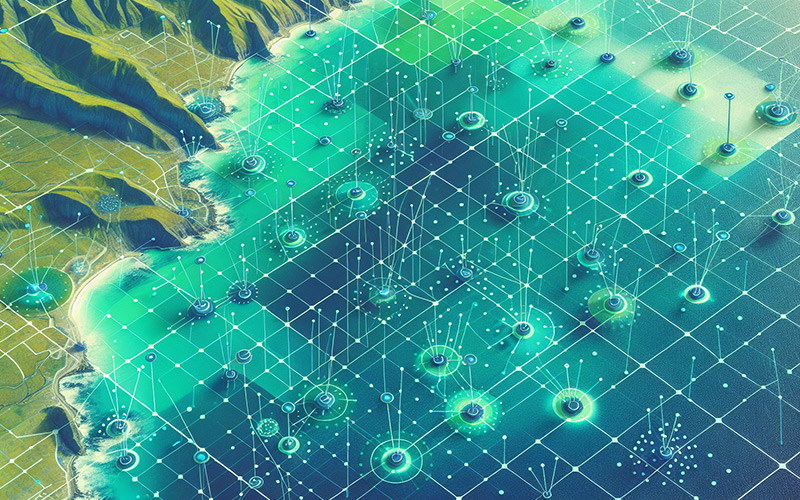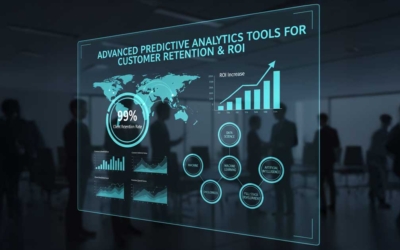Measuring the impacts of nearshore equipment comes with pitfalls that, if ignored, compromise data integrity and lead to misguided environmental actions. Key issues such as inappropriate sensor resolution, ignoring natural variation, and insufficient analysis can distort your study’s findings. Herein, we confront these common mistakes when measuring the impact of nearshore equipment, offering practical advice for professionals keen on capturing the true state of our coastal environments with nearshore equipment.
Key Takeaways
- Accurate measurement in the nearshore zone is critical for understanding and managing dynamic and complex coastal environments, and relies on a combination of spatial and temporal resolution, appropriate techniques, and accurate calibration.
- Selection of inappropriate measurement techniques and inadequate field practices, including sensor mis-calibration and ignoring cross shore transects, can lead to significant misinterpretations in the data collected from nearshore environments.
- Human oversight is necessary in the interpretation of data from remote sensing and nearshore measurement equipment due to the limitations of automated systems in capturing the semantic composition and dynamic processes of natural environments.
Understanding the nearshore zone
The nearshore zone is a complex and dynamic environment, influenced by a multitude of factors and processes. Terraces like the low tide terrace (LTT) in Nha Trang beach, Vietnam, show daily evolution, indicating the dynamic nature of the nearshore zone.

Seasonal beach profile changes, including the width and evolution of terraces, are impacted by intense seasonal events like winter monsoons.
Some key points to note about the nearshore zone are:
- It is influenced by a multitude of factors and processes
- Terraces like the low tide terrace (LTT) show daily evolution
- Seasonal beach profile changes are impacted by intense seasonal events like winter monsoons
Identified error components in video estimates for nearshore bathymetry—such as nonlinearities and localized wave setups—highlight the importance of accurate measurements.
The dance of the nearshore is choreographed by the tidal cycle, sculpted by sediment fluxes, and influenced by nearshore bathymetry. Cross shore transects reveal the shoreline changes that silently narrate the stories of coastal areas. These processes are not just for the curious observer; they are the crux of coastal engineering, where every water depth and shoreline adjustment is a testament to the ocean’s ceaseless work.
The nearshore zone is where the coast meets the ocean, where sandy beaches bear the imprints of the tide, and where the morphology of the location is a living record of erosion and growth.
Defining nearshore dynamics
Nearshore processes are driven by the seasonal scale impacts of wave forcing, with variations such as high-energy waves during the winter monsoon and smaller local wind waves during the summer monsoon. The event duration and recovery duration at Nha Trang beach show a near-linear relationship with considerable dispersion, reflecting the temporal complexity of nearshore dynamics. Time-stack images captured at 2 Hz provide a high-resolution temporal record of nearshore wave conditions.
Local wave conditions are characterized by:
- The average period Tm (zero-crossing) derived from video images, emphasizing the importance of temporal resolution in nearshore studies.
- Different approaches for depth inversion in near-shore camera systems, like the spectral method of cBathy and the cross-correlation temporal method, indicate the importance of spatial resolution in equipment selection.
- Visualization of the evolution of shoreline position is facilitated through daily mean cross-shore stack video images, showing the influence of spatial dynamics in nearshore zones.
An extended study featuring offshore wave forcing and beach response provides insights into the spatial and temporal responses of a nearshore environment over 3.5 years. LTT beaches are recognized as a stable type that responds rapidly to environmental changes, illustrating how different beach types can influence the measurement of nearshore dynamics. The interplay of these factors governs the delicate equilibrium of the nearshore zone, making it clear that understanding these dynamics is not just a scientific endeavor but a necessity for effective coastal management.
Importance of accurate measurements
Accurate measurements in the nearshore zone are essential for evaluating and managing the effects of water quality degradation and habitat alteration. Precise and reliable data collection is critical for understanding the influence of climate change, ocean acidification, and hypoxia on the nearshore ecosystem.
In the pursuit of coastal education, experts utilize various measurement techniques, from in situ measurements to field measurements, to capture the different scales of environmental changes. The magnitude of these measurements and their accuracy determine the success of measuring and understanding the complex interactions within the nearshore zone. Accurate measurements are not just about collecting data; they are about painting a true picture of the nearshore environment – its health, its changes, and its future.
Selection of inappropriate measurement techniques
Charting the waters of the nearshore zone requires not just skill but also the right tools. However, selecting inappropriate measurement techniques can lead to a murky understanding of this vibrant environment. Video-based depth inversion techniques, for example, are generally not suitable for analyzing wind wave conditions in deep waters because they cannot accurately capture the shortest wave periods. Furthermore, improper sensor installation, which includes incorrect location or careless handling, can greatly affect the accuracy of sensors, leading to misrepresentation of environmental data.
The implications of such errors are far-reaching, affecting everything from environmental assessments to the design of coastal defense structures. The choice of measurement techniques, therefore, is not just a technical decision but a pivotal one that can shape our understanding and management of the nearshore zone.
Mismatched spatial resolution
Utilizing satellite sensors with coarse spatial resolution for monitoring Total Suspended Sediment (TSS) in coastal waters can significantly underestimate the TSS concentration compared to high-resolution sensors. In Northern Western Australia, the difference between TSS concentrations reported by high spatial resolution WorldView-2 and low spatial resolution MODIS-Aqua sensors was markedly high, with WV2 recording up to 160 mg L-1 and MODIS-Aqua a maximum of only 23.6 mg L-1. The variability in reported TSS concentrations increases when satellite data is resampled to coarser resolutions, as evidenced by variability rates of 114.46% for WV2, 304.68% for Landsat-8 OLI, and 38.2% for MODIS-Aqua sensors.
The spatial scales at which we observe the nearshore environment can alter our perception of its health and dynamism. When the spatial resolution is mismatched, we risk overlooking the intricacies that make the nearshore zone both beautiful and complex. As such, it is imperative to choose measurement tools that can capture the spatial and temporal nuances of this unique environment, ensuring that every grain of sand and every ripple of water is accounted for.
Temporal resolution misalignment
The temporal resolution of environmental monitoring is crucial for capturing the dynamics of natural processes. For rapidly changing processes such as sediment transport or wave action, high temporal resolution is required to record the full spectrum of variations and prevent data loss. Shore-based video systems monitoring nearshore environments operate at high-frequency data capture, such as a rate of two frames per second, to accurately record dynamic changes.
Temporal misalignment can be just as problematic as spatial discrepancies. It’s like trying to capture the essence of a symphony with a few scattered notes – the resulting melody is incomplete and misleading. To truly understand and protect our nearshore zones, we must align our measurement rhythms with the natural tempo of coastal processes on various temporal scales.
Overlooking environmental variability
Coastal processes are significantly affected by natural factors such as El Niño, La Niña, and droughts, as well as by the effects of climate change like increasing ocean temperatures, altering circulation patterns, and sea level rise, all of which may affect nearshore habitats and species. Ocean acidification, resulting from increased atmospheric carbon dioxide concentrations, impacts the chemical equilibrium of seawater, potentially affecting organisms and habitats in nearshore waters. Nearshore zones are subject to anthropogenic noise pollution from activities such as dredging, oil and gas exploration, and renewable energy development, which can disturb marine life. Invasive species introduced through ballast water discharge and aquaculture activities competitively affect native species, with repercussions for food chains and ecosystem health.
Measurement uncertainty in nearshore equipment can stem from sensor drift, biofouling, and the inherent spatial and temporal variability of the environment being monitored. Environmental errors occur when external factors, such as wind, interfere with equipment measurements, resulting in data inaccuracies. Coarse spatial resolution in measurements can mask spatial variability, such as in suspended sediments, leading to misinterpretation of sediment dynamics. High-latitude estuaries exhibit pronounced seasonal fluctuations due to factors like freezing conditions and glacier contributions, which significantly influence local fish abundance and biodiversity.
Seasonal changes in freshwater input to estuaries create temperature and salinity gradients, directly impacting fish community structure in regions impacted by seasonal variation.
Ignoring seasonal patterns
Incorporating seasonal variation into measurement strategies is essential for capturing significant sediment transport events that may occur during different times of the year. Climate-induced shifts from melt to rain-driven watershed regimes have the potential to significantly alter nearshore habitats. Seasonal variations can impact the timing, force, and physicochemical makeup of riverine inputs into nearshore ecosystems, affecting overall measurements.
When seasonal patterns are ignored, we fail to capture the long-term trends and nuances that define the nearshore environment. It’s like looking at a painting with half the colors missing – the full picture remains elusive. Therefore, incorporating a comprehensive time series into our measurement strategies is not just beneficial but necessary to ensure that we don’t overlook the ebb and flow of nature’s seasonal brushstrokes.
Underestimating extreme events
Storm events, due to their episodic nature, have a significant resetting effect on nearshore beach morphology, leading to rapid and extensive erosion of beach sediment. Extreme storm conditions, like those experienced in the 2013–2014 winter in the UK, can lead to dramatic morphological changes, including the steepening and flattening of different beach faces and creation of offshore storm deposits. Video-derived bathymetry has shown that storm-induced mega-rips are instrumental in catalyzing inter-tidal beach erosion.
Following a storm, there can be a rapid natural recovery in the inter-tidal zone with a return of substantial sand volumes, while the sub-tidal zone may experience a more gradual accrual of sediment. Even during recovery periods when wave conditions typically cause erosion, shoreward sediment transport can lead to accretion in the inter-tidal beach zone. The volumes of eroded and accreted material during and after extreme weather events do not always balance out, indicating that total nearshore area sediment volume can undergo net gains. Measuring the impact of nearshore equipment must account for the dramatic alterations caused by extreme events to ensure an accurate understanding of nearshore dynamics.
Extreme events are the wildcards of the nearshore zone, reshaping the landscape in a matter of hours. Underestimating their power and failing to account for their impact in our measurements is akin to ignoring a storm warning – it leaves us unprepared for the aftermath. Recognizing and quantifying the effects of these events is, therefore, a cornerstone in the accurate assessment of nearshore equipment and processes.
Misinterpreting data from nearshore equipment
While technological advances have improved data collection for abiotic characteristics, the complex biotic metrics like behaviors, locations, and traits of individuals, as well as species abundances and interactions, pose a challenge for automation and still require significant human interpretation. The limitations of automation in remote sensing interpretation include:
- The semantic composition, spatial association of elements, and scene pattern evolution mechanism of a complex natural environment surface are difficult for automated systems to fully comprehend.
- Trustworthy remote sensing interpretation involves a process that integrates visual perception and geographical cognition, which is challenging for purely data-driven methods.
- Automation in remote sensing faces challenges like insufficient coupling of physical mechanisms, evolutionary patterns, and expert knowledge.
These challenges emphasize the need for human oversight to ensure interpretability and reliability of outcomes.
Human error includes mistakes such as transcriptional errors, where data is recorded incorrectly, and estimation errors, where measurements are read inaccurately. Use of linear wave dispersion in a nonlinear nearshore environment can cause an overestimation of inverted depth, which is a specific error in interpreting data from nearshore equipment. The range of errors for video-based bathymetry inversion can be between 0.2–2.0 m (RMSE) and 0.01 to 1.0 m (bias), which highlights the necessity for careful analysis to prevent misinterpretation. Shore-based video camera systems often encounter a common problem where the modulation transfer function abruptly changes from non-breaking to breaking waves. This change can complicate the interpretation of data..
The dominant uncertainty in video-based depth inversion is wave crest celerity detection, pointing to a specific area where misinterpretation can occur. An associated change in transfer function can generate an apparent increase of celerity, leading to spurious results in the analysis of video-based depth measurements. Therefore, it is paramount to approach data with a critical eye, understanding that the tools we use to capture the essence of nearshore processes may also distort it if not interpreted with precision and caution.
Error estimates and accuracy limits
Errors inherent to the method used to estimate bathymetry, which fluctuate with varying wave and tidal conditions, underpin the need for careful error estimation in depth inversion techniques. A proposed error estimation method for depth inversion accounts for tidal evaluation to refine accuracy and address methodological and physical induced errors. Discrepancies in measurement methodologies, such as procedural errors in rounding off numbers, can lead to slight differences in results, impacting the reliability of nearshore equipment measurements.
Sensor drift, often exacerbated by physical disturbances, significantly affects accuracy of measurements and requires more frequent calibration to ensure data reliability. Expert interpretation in remote sensing is crucial to overcome complexities such as data noise and sensor quality issues, thereby ensuring the accuracy and trustworthiness of measurement results.
Understanding the limits of accuracy and the potential for error in any measurement is foundational to the integrity of nearshore studies. This knowledge allows us to apply two parameters – skepticism and rigor – in our analysis. Each measurement, each parameter carries with it a shadow of uncertainty, and it is our responsibility to shine a light on these shadows, to understand their shapes and sizes, and to account for them in our conclusions.
Comparing incomparable data sets
Comparing data from different sensors or methodologies without proper standardization can lead to inaccurate assessments of environmental conditions. Historical nearshore sampling methods that vary widely introduce biases that prevent direct comparison of data sets; therefore, standardization of these data is required to determine the condition of aquatic systems over time. To standardize fish abundance data sets collected using multiple sampling gears, such as seine nets of different lengths, equivalence factors can be derived to account for the biases introduced by different net types.
When satellite sensors with different spatial resolutions are used to monitor the same region, they can show different levels of detail in sediment plumes, with coarser resolutions losing fine spatial features and finer resolutions capturing more details. This disparity is not just a technical glitch; it is a fundamental error that can lead to misguided decisions and misguided conservation efforts.
The challenge, then, is not merely in gathering data, but in weaving a coherent narrative from disparate threads. It is a task that demands meticulous comparison and a nuanced understanding of how to align different data sets into a harmonious whole. Only then can we truly trust the story that the data tells us about the state of our nearshore environments.
Inadequate field measurement practices
Automated systems for monitoring ecological communities, like nearshore environments, demand substantial human effort to interpret the complex data they produce due to inefficiencies in manual processes scaling with large data volumes. The significance of field measurements cannot be overstated, yet even the most sophisticated measurements are vulnerable to human error and inadequate practices. It’s a stark reminder that the hands guiding the instruments are as crucial as the technology itself.
In the unforgiving and variable conditions of the nearshore zone, every measuring instrument must be wielded with precision and understanding. Neglecting this can not only skew results but also lead to a cascade of errors affecting long-term monitoring and research.
Improper sensor calibration
Regular calibration of sensors is crucial to maintain accuracy, particularly due to the challenging conditions underwater sensors face such as high pressures and corrosion. Natural sensor drift in piezoresistive pressure transmitters, due to changes in the bonding layer, requires regular calibration to correct the continual shift in output. Sensor accuracy can be compromised over time by environmental factors such as:
- biofouling
- corrosion
- sensor degradation
- cross-sensitivity to other environmental parameters.
Application variables like temperature, specific gravity, and barometric pressure can impact sensor performance, necessitating careful sensor selection and programming. Sensor technologies sensitive to multiple environmental factors may benefit from multi-variate calibration methods to adjust for correlated measurement errors. For minor measurement inaccuracies, field zero and span adjustments can be used, but factory recalibration is recommended when major recalibrations are necessary. Quality control procedures, including real-time and delayed mode checks, are integral to assuring the reliability of sensor data.
Instrumental error must be identified and corrected to prevent consistent deviations from true measurement values. It is the diligence in calibration, the vigilance in maintenance, that upholds the edifice of reliable data. To ignore these principles is to undermine the very foundation of our observations and, ultimately, our understanding of the nearshore realm.
Neglecting cross shore transects
The importance of considering cross-shore transects in nearshore measurements cannot be understated. These transects capture the full spectrum of environmental variations, from sediment transport to nearshore processes, and their neglect can lead to incomplete assessments of significant sediment transport events. The nearshore zone, with its dynamic nearshore bathymetry, is a tapestry woven from countless threads of data, each cross shore transect adding detail and depth to the overall picture. Ignoring these transects means missing out on crucial information that can aid in understanding shoreline changes and the complex interactions at play within the nearshore environment.
In the grand scheme of coastal monitoring, cross shore transects represent the bridge between the shoreline and the deeper waters, charting the gradients of change that define the coast. It’s through these transects that we can begin to comprehend the intricate dance of erosion and accretion that shapes our beaches and, ultimately, our relationship with the sea. To overlook these transects is to view the nearshore zone through a narrowed lens, risking a distorted perspective of its true nature.
Technological reliance and human oversight
Human expertise is essential in the interpretation of remote sensing data to ensure accuracy, as technology alone does not guarantee trustworthy results. The partnership between human cognition and remote sensing technologies is vital for overcoming the semantic gap and accurately representing real-world geographic features. As much as we advance in the realm of nearshore study, the need for a human touch remains unassailable—a research foundation built not only on data but also on the nuanced understanding that comes from years of experience.
In this ever-evolving field, it is crucial to strike a balance between technological reliance and human insight. The present work obtained from sophisticated systems must be delicately paired with the keen eye of the seasoned expert, ensuring that our derived conclusions are both accurate and meaningful.
Balancing tech with expertise
Human experts are essential for simulating visual perception and understanding geographic spaces, leading to accurate interpretation of surface environmental elements in remote sensing. The geo-parcel concept in remote sensing demonstrates the need for expert knowledge to effectively match remote sensing with natural geographic objects on the surface. Artificial intelligence and machine learning require the integration of expertise from multiple disciplines, highlighting that advanced algorithms still necessitate human expert oversight.
Sensor self-validation and diagnostics play a crucial role in maintaining data quality, and knowledge of sensor failure modes and system limitations is vital, especially in the deep sea where in situ calibration is challenging. The focus must remain on the synergy between human experts and technological tools, each complementing the other to enhance our understanding of the nearshore zone.
Recognizing the limits of automation
Automated satellite systems may not adequately capture short-term environmental variations within the nearshore zone due to limitations in temporal resolution set by satellite revisit frequency. This is an example of the constraints we face when relying solely on automation. While technology has transformed the way we analyze and understand the nearshore zone, it is not without its limits.
It is imperative to recognize these limits and adjust our methods accordingly. Only by doing so can we ensure that the data we collect is both accurate and reflective of the nearshore environment’s dynamic nature. It is a delicate dance of numbers and nature, one that requires both the precision of machines and the discernment of human experience.
We have journeyed through the complexities of measuring the impact of nearshore equipment, from the nuanced dynamics of the nearshore zone to the pivotal role of human oversight. We’ve seen how the selection of inappropriate measurement techniques, overlooking environmental variability, and misinterpreting data can lead to significant errors in understanding coastal processes. It’s clear that accuracy in measurements is not just a technical concern but a critical component in the effective management and conservation of our coastal environments.
As we conclude, let us remember that the integrity of our nearshore studies hinges on our ability to recognize and account for the myriad of factors that define this vibrant zone. May this discussion serve as a beacon for those navigating the delicate balance of technology and expertise in the quest to protect and understand our precious coastlines.
Frequently Asked Questions
What defines the complexity of the nearshore zone?
The complexity of the nearshore zone is defined by a multitude of factors including wave forces, tidal cycles, sediment fluxes, and nearshore bathymetry, along with seasonal and daily processes. Understanding and measuring this complexity can be challenging.
Why is accurate measurement in the nearshore zone important?
Accurate measurement in the nearshore zone is important for evaluating and managing water quality degradation, habitat alteration, and understanding the impacts of climate change, ocean acidification, and hypoxia on the nearshore ecosystem. This ensures effective conservation and management efforts.
How can the selection of inappropriate measurement techniques affect nearshore studies?
Using inappropriate measurement techniques for nearshore studies can lead to misrepresentation of environmental data, such as underestimating sediment concentrations or failing to capture natural processes, which can significantly impact the accuracy and reliability of the study results.
What role does human expertise play in the interpretation of remote sensing data?
Human expertise plays a crucial role in accurately representing real-world geographic features and bridging the semantic gap when interpreting remote sensing data. This involves simulating visual perception, understanding geographic spaces, and integrating expert knowledge.
How can neglecting cross-shore transects impact nearshore measurements?
Neglecting cross-shore transects can result in incomplete assessments of nearshore processes, leading to a lack of understanding of significant sediment transport events and environmental variations.






0 Comments